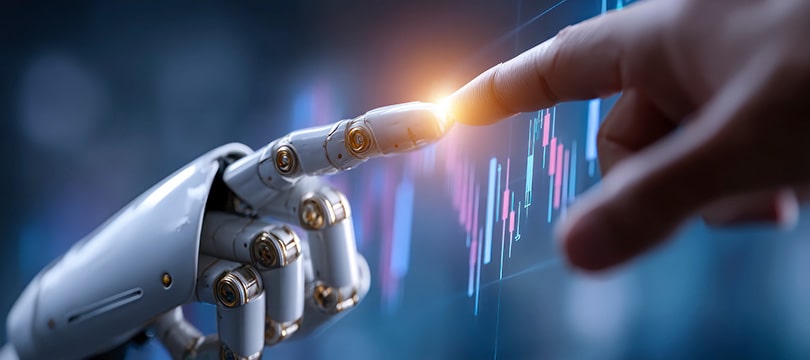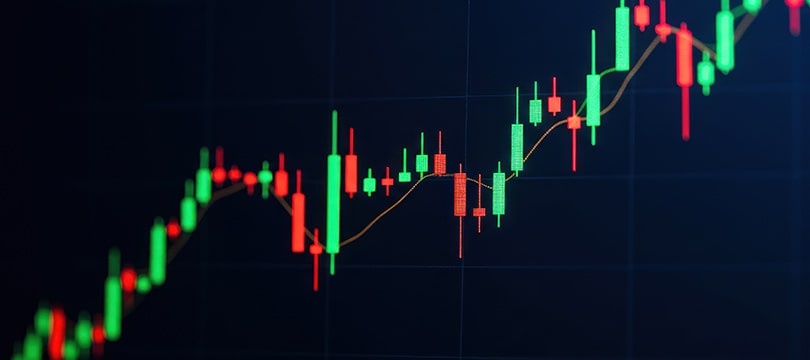Algorithmic trading - is it truly within everyone's reach? It's a question that many retail traders ask themselves, especially today, in the age of artificial intelligence and the massive use of the most amazing technologies.
The answer is yes, but it's not at all simple. In this article, we will investigate the real possibilities for an average trader to practice algorithmic trading.
What is algorithmic trading
First of all, an overview of
algorithmic trading. This term refers to an operating mode based on
computer algorithms that execute buy and sell orders automatically, according to predetermined rules. The goal is to eliminate human intervention during execution, speed up operations, and increase decision-making efficiency.
Unlike manual trading, where the trader physically sends orders, in algorithmic trading, human intervention is limited
to the design and monitoring of the system.
Algorithmic trading offers several advantages:
- Execution speed. Algorithms operate in milliseconds. This allows them to seize opportunities that would be unattainable for a human operator.
- Elimination of emotionality. Decisions are made based on logical and statistical rules, reducing the impact of cognitive errors and impulsive reactions.
- Continuous operation. The system can function 24 hours a day, without breaks. This is especially useful in non-stop markets, such as Forex or cryptocurrencies.
- Simultaneous management of multiple instruments. An algorithm can follow dozens of currency pairs or indices simultaneously, improving operational diversification.
- Scalability. The same algorithm can be applied to accounts with different capital sizes, maintaining consistency in risk management.
What is needed for algorithmic trading
To start algorithmic trading, it's not enough to download software or purchase a bot. Specific preparation is required, both technical and strategic, and access to certain tools.
Here's an overview of the fundamental elements.
- Platform compatible with automation. You need to choose a platform that allows the use of custom scripts or algorithms. There are many, the most well-known are cTrader and MetaTrader with dedicated language.
- Broker with API access. The broker must provide an API (Application Programming Interface) to allow communication between the software and the market. Not all brokers offer it, and some impose usage limits or additional costs.
- Programming knowledge. We're talking about algorithms, which need to be programmed. Therefore, ad hoc knowledge is required. Some languages used are Python, MQL4/5, JavaScript, C#. Even if there are visual "drag-and-drop" tools, programming remains a competitive advantage.
- Quality market data. To test or run an algorithm, accurate data is needed, in real-time or historical, with adequate depth (tick by tick or at least minute by minute). Some providers are paid.
- VPS server or stable connection. The system must always be online. A VPS (Virtual Private Server) guarantees continuity and low latency, especially if located close to the broker's servers.
- Robust algorithmic strategy. An algorithmic strategy must have a coherent logic, tested on multiple scenarios and capable of adapting to changing market conditions. A simple rule is not enough.
- Statistical analysis capabilities. Statistical analysis tools are useful for validating the strategy: risk/return ratio, trade frequency, profit factor, Sharpe ratio, etc.
- Security checks and monitoring. An alert and monitoring system is needed to verify that the algorithm is not acting anomalously. Even the best systems can suffer errors or bugs.
Why algorithmic trading is complicated
Despite the apparent simplicity offered by many platforms, algorithmic trading presents numerous difficulties, some of them
critical.
Let's look at the main obstacles to consider.
- Overfitting during backtesting. It's a common mistake: building a strategy that works perfectly on historical data but fails completely in the real market. It happens when the parameters are too adapted to the past, which compromises generalizability.
- Malfunctions and bugs. Algorithms are software. They can contain code errors, execute incorrect orders, or not handle unforeseen events well. An apparently safe strategy can become disastrous, and a simple logic error is enough.
- Network delays and latency. Especially in high-frequency trading, the latency between the algorithm and server can cause slippage, rejected orders, or delayed executions. The problem is more pronounced without a VPS or with slow brokers.
- Dependence on external data. Many algorithms rely on real-time data feeds. If the data flow is interrupted or presents anomalies, the strategy can miss signals, block operations, or miscalculate.
- Markets changing structure. An algorithm can work well for months and then stop being effective because the market changes. This is the case, for example, with geopolitical events, new regulations, changes in liquidity.
What can we draw from what has been said so far?
Simply put, algorithmic trading is no longer the prerogative of large investment banks. Thanks to the spread of advanced platforms and accessible tools, even retail traders can build and manage automated systems. At the same time,
it's not an activity for everyone. Technical skills, adequate resources, and strong discipline are required.




